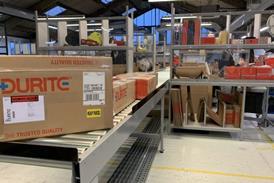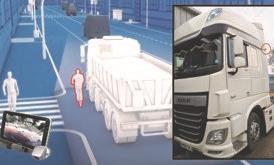
With the appointment of Malcolm Wilson to the board of its French parent company earlier this year, Phil Shaw (pictured below) was promoted to replace Wilson as Norbert Dentressangle (ND) UK Logistics MD. The company does not split turnover and profit for each country, and between them Shaw and Mike Bridges (left), MD of ND’s UK Transport Services division, are responsible for the lion’s share of ND’s UK and Ireland €1.3bn (£1bn) business.
Before stepping up to Logistics MD, Shaw ran ND’s packed chemicals and manufacturing business, having joined the company in 2008 after stints with Sainsbury’s, TNT and Davies & Robson. His path into logistics was unconventional however.
“I was an ex-pat in South Africa and then joined the Royal Navy as a submariner,” he explains. “I was then taken on by Sainsbury’s and even appeared in a Royal Navy advert in the Sunday Times promoting the force as an alternative to university as a gateway into a good career, with the strapline ‘I am happy to move tin cans about because I have been living in one for five years’. That was the start for me.”

Bridges became MD Transport in March 2011, and his route to job was by contrast more straightforward.
“I have known nothing else, apart from making BR ticket machines on a sandwich year at university,” he says. “I went into Wincanton as a graduate trainee aged 22 and spent 12 years with them. I then spent six years with Christian Salvesen before ND acquired it in 2007.”
Bridges was specialist services director at Salvesen between 2005 and 2007; coincidentally Malcolm Wilson was also with Salvesen but they were in different divisions.
“Malcolm was logistics country manager at the time,” says Bridges. “I was looking after one of the business units that sat within transport.”
Internally, ND splits itself into three divisions: Logistics, Transport and Freight Forwarding, but customers looking at its website will just see a range of “supply chain solutions and services” tailored to their needs.
“From the customer’s point of view it is about providing under the ND brand the best value,” says Shaw. “There are particular skill sets in Logistics and in Transport and from the customer’s point of view they shouldn’t mind which part provides which service as long as at the end of the day we provide a service to the customer.”
Wheels and sheds
“Transport is predominantly about wheels and Logistics is predominantly about sheds,” explains Bridges. “But it’s not as simple as that because we align those services to the customer requirement. So where it makes sense for the wheels to sit with the shed and be managed by the same team and have that common interface with the customer then the wheels might sit in Logistics.”
Perhaps the key differentiators between Logistics and Transport are the dedicated DC management contracts that sit in the former and the shared user network run by the latter.
“It is safe to say Transport will never have big sheds because that’s a specific skill set that sits in Logistics,” says Bridges. “We work very closely together and where there’s a requirement for separate contracts we will work together with a common interface into the customer.”
Shaw adds: “What Mike has that we don’t have is a network. A lot of Logistics sites are very customer focused ie a warehouse for customer A or predominantly customer A albeit there might be other customers in there. There might be transport associated with it from a dedicated point of view or reverse flows into the warehouse but what we don’t have is that network to do small pallet or three pallet deliveries. That’s when the two parts will come together to provide the overall logistics service and it works well.”
Logistics can in effect call upon Transport to act as a third party haulier to provide traction for inter-DC trunking, but can equally go to the market for haulage if that makes more sense.
“For trunking we would call on Transport but if they couldn’t do it we would look outside,” says Shaw. “It is a matter of getting the best for the customer.”
Market rate
Bridges says: “My rates absolutely have to reflect the market rate. Logistics are not obliged to use Transport if there is a better supplier out there in terms of pricing. We do not just compete on price – there are more commoditised elements and some areas where we just don’t compete but where we can, we do.”
Speaking to MT earlier this year, ND group chief executive Herve Montjotin said: “In Transport, our goal is to operate between 3% and 4% return on sales, which is a good level of profitability as far as the market is concerned. My belief is that a correctly-run transport business never loses money – it just has to be adapted to the ups and downs.”
Bridges will not be drawn on whether the UK Transport operation meets this target but says: “It has been a very competitive market for the last two to three years. There has been some very aggressive pricing out there and that is coming home to roost with some organisations. It is something I won’t engage in – it is a very short term view. We differentiate ourselves by being efficient and customer focused. ND will not chase volume at any price.”
All logistics clients – especially those with dedicated DCs and vehicles working on closed loop distribution routes – are looking for ways to increase efficiency. This includes finding a backload wherever possible on the return leg back to the DC. Having both dedicated and shared user sites enables ND to optimise vehicle movements across its UK fleet of 1,800 trucks and 2,500 trailers.
“We don’t have a central control tower that sits across both organisations, but we have a number of different control towers within the Transport organisation,” says Bridges. “One is around our Key-PL platform that coordinates a 3,000 full truck loads a day transport network. Then we have a control tower that sits across our shared user network and a third one that looks at our dedicated customers and where we can backload those. That is where we have the crossover and we do exchange capacity and available loads across the two organisations.”
Varied
“With Logistics it is slightly different as the customer work flows are just so many and so varied,” goes on Shaw. “So there would be work where there would be a significant element of transport in terms of the customer’s overall supply chain but at the other extreme there might be sheds we operate where we might not do transport at all. There might be specific requirements for transport such as high cube vehicles or vehicles which move materials handling equipment about. So there is another dynamic to it rather than just moving standard trailers about.”
Although in the past it might have been a fair assumption to see Logistics operating RDCs for retailers and Transport handling primary movements for manufacturers, these days the boundaries are blurring.
“We are not sector focused, it is more about capability,” says Bridges. “We will deliver through the night for a retail fashion house for example using resources that are predominantly used on industrial movements, such as our automotive through the night network. It is what is best for the customer.”
“We have a lot of customers and a lot of movements around the country so it’s not like we are going from manufacturer to retailer and then looking for a backload,” adds Shaw. “We work for a manufacturer of glass bottles and we work for a brewery. These opportunities do present themselves.”
Bridges continues: “It is more about opening up the whole supply chain. Previously people would look at part of it; it has become a more holistic view now. As manufacturing pushes out to more cost effective countries then we go on the back of that. We have a wholly joined up European offer from the pallet distribution point of view, whether it is a single pallet or a full truck load, predominantly provided in red trucks but with an element of partners. There is no minimum shipment – normally it is the cut off where a parcel network becomes more cost effective but we are particularly competitive on small orders because of the joined up network.”
Shared user
One solution to the problem of high service level, high cost dedicated distribution is to move back to at least some element of shared user services, whether for sheds or trucks.
“There is a shift back to shared user,” notes Shaw. “In warehousing there is a different dynamic from Transport, as Logistics is generally more dedicated and I don’t have the network. Tyres are a good example. They are mainly retail deliveries with some wholesale in there as well. There is a small minimum order quantity and it is today for tomorrow, so it would be an uneconomic model for manufacturers to say ‘go with one tyre for me and go to the same place with another tyre’ – that would just drive cost in. To a certain extent it depends on the confidence of the brand to put its product right next to someone else’s and deliver through one network.”
This effect is also being seen in Transport.
“With the economic climate at the moment we are certainly seeing people wanting to shift from fixed to variable cost,” observes Bridges. “What that means for us is that we are seeing more people who used to run their own fleet outsourcing. So we are picking up a lot of dedicated contract distribution and we are also seeing a lot more pushed onto our shared user pallet distribution network.
“The real success is where we can produce a hybrid, so we have a core dedicated fleet that is operating absolutely optimally supplemented by the shared user pallet distribution network. Because we operate so many vehicles in the UK we can offer a great deal of flexibility around the dedicated element. So we don’t say ‘you have to have 10 trucks for five years and live with it’ – we can adapt that core fleet because we can absorb excess capacity into other operations. So we can offer a very flexible model, and more people are looking for that flexibility, agility and transfer of fixed cost into variable.”
Sub-contract
The need to move from fixed to variable cost applies equally to ND as it does to its customers, and that means effectively using sub-contract haulage to top up capacity at times of peak demand.
“It is also about having that flexibility built into the business model so you can bring resource levels down at short notice and build them up again, because what we have seen is a lot more volatility in volumes,” says Bridges. “It’s about having the ability to draw on sub-contract haulage but we focus more on partnerships rather than just the general sub-contractor market, and by doing that we can guarantee the quality and standards to which those sub-contractors will operate.”
This has been taken to the extreme with ND’s Key-PL model, which operates as a 4PL for three large customers and relies entirely on sub-contract haulage.
“Key-PL is about drawing in resources from the sub-contractor market in an effective and efficient manner,” says Bridges. “Within that offer we have an e-procurement tool where we can put movements out to our preferred haulier list so they can bid on loads, they can identify empty vehicles they have available, and we can identify loads to the haulier base that we have a requirement to fulfil.
“In the asset based business, probably 20 or 30% is outsourced to give us that level of flexibility.”
Shaw agrees: “It is probably 30% in Logistics too. We work closely together and Mike will supply vehicles when we have a transport need but it is a dynamic working environment.”
As ND has grown in the UK, the challenge for management is to retain the flexibility and responsiveness that can be lacking in large 3PLs.
“The DNA of the business is to keep being entrepreneurial,” says Shaw. “We as a management team are very conscious that our success is around our nimbleness, being fleet of foot and able to make decisions quickly with a responsive management team. The majority of decisions we can make quickly because we have very straightforward management lines to respond to customer need.”

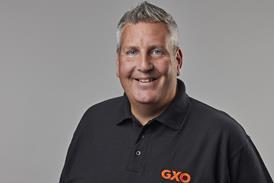

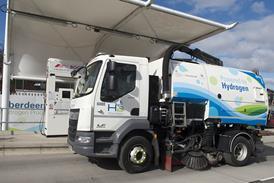


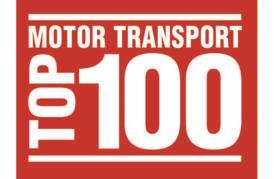
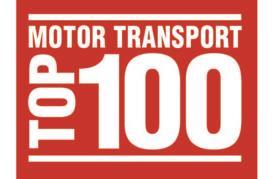
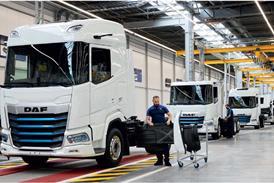
![Mercedes-Benz_eActros_600_(1)[1]](jpg/17820_mercedesbenz_eactros_600_11_978080.jpg)

